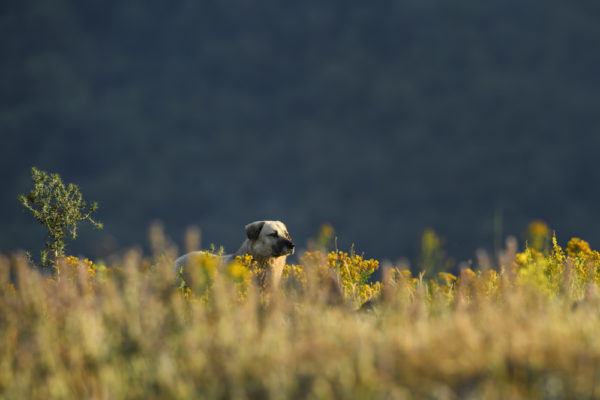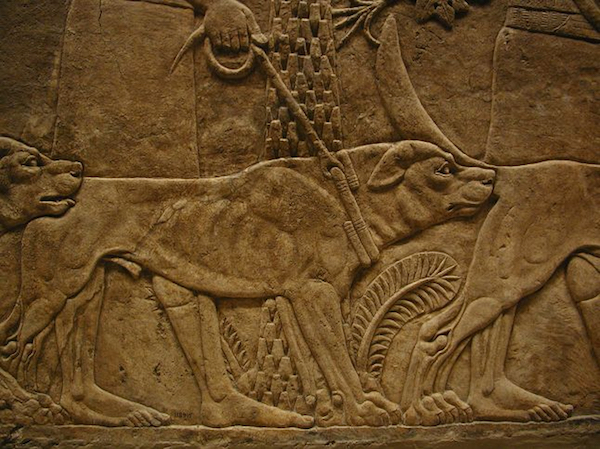
Even those of us who are not Biblically well-versed have likely heard of the Book of Job. It is a book in the Jewish and Christian Bible that deals with suffering, godly patience, and trust. The story centers around Job who lives in Uz, an obscure land far from Israel. Though there is debate on the actual country that corresponds to Uz, many scholars believe that the “Book of Job” was set in Turkey.
So when does a dog enter this post?
Now. Job was said to have owned 7,000 sheep, and the “Book of Job” describes large dogs living among Job’s flocks. Indeed, archeological items dating back to 2000 B.C. describe a dog in the Anatolian region of Turkey that fits the description of the Anatolian Shepherd Dog: Large and strong with a heavy head. These dogs were depicted on bas-reliefs now on display in the Assyrian Rooms of the British Museum.

The breed is still used in the rural districts of Turkey as an indispensable companion to shepherds, and a flock’s first line of defense against predators. The breed is known locally as Coban Kopegi (cho-bawn ko-pay) or “Shepherd’s Dog,” and a dog lives his life with his sheep or goats as an accepted member of the flock. Extremely independent, the dogs sometimes had to find their own food once they were no longer puppies, and small critters like gophers did nicely. Always, their first instinct is to take care of themselves and the flock without the necessity of directions or intervention.
An Anatolian’s preferred defensive measure is to serve as a visual deterrence: See and be seen. If that doesn’t scare off a predator, a bloodcurdling bark might, and it’s not an idle warning. Anatolians are fearless, strong, and quick, and it would take a bold or desperate predator to stand up to one.
Having lived a somewhat isolated existence, the Anatolian Shepherd Dog has changed very little over the centuries, and retains her exceptional qualities and abilities to this day. Read about “Gator,” a breed winning champion show dog at Westminster, and hero on a cattle field thousands of miles from New York City.
Image:Anatolian Shepherd Dog/Deposit Photo

Very interesting! Thanks for sharing.
We’re delighted you found it worth your time, Pat, thanks for writing!
Thank you for sharing! We have an Anatolian Shepherd mixed with Great Pyrenees named Storm; and he is as you’ve described! ❤️
They don’t reach full maturity until age x3, our will be x2 next month. It’s amazing how SMART they are—they learn EXTREMELY QUICKLY! 😊
Delighted you liked the piece, Mika, and thank you for weighing in. There is nothing like hearing from an actual owner!
Thank you for writing this small article it is very informative. I have an Anatolian Shephard named Jax. He is fawn with black mask, black ears, and a curled tail over his back. He is the most protective dog I have ever owned. He chases airplanes while barking, he hates the garbage truck, mailman. I have another dog named Samson, he is a daniff (old English mastiff and great dane). Jax and samson do get in fights sometimes where I have to break it up, it always ends up with Jax on top of our 180 plus lb samson. Jax is always two steps ahead of samson when they play too. They are the most interesting breed to me, Jax takes care of our three cats too. He is only 1 and a half years old, he likes to play with our cats. He watches them , makes sure everything is OK. Thanks again.
It was our pleasure, Chris, and we are delighted to hear about Jax. Perhaps down the road, a picture of him?